Estimated Parking Lot Life – Get the Most Out of Your Lot
Discover the secrets of extending the lifespan of your parking lot in this insightful article. Uncover how a well-maintained parking lot can last up to 25 years.
A parking lot’s longevity hinges on several crucial factors. Timely repairs and diligent maintenance play pivotal roles in prolonging its life. Environmental conditions, such as extreme weather, can significantly impact durability. Regular upkeep and appropriate measures against these elements are key to achieving the maximum life expectancy of a parking lot, typically ranging from 20 to 25 years.
Delve deeper into the comprehensive guide below to explore the various aspects that influence the lifespan of your parking lot and how to effectively manage them.
Factors that Affect the Longevity of a Parking Lot
If you are in the process of paving a parking lot or having a newly paved one, you must surely be concerned about its longevity. For all homeowners, longevity is the utmost desire. Considering what a huge investment building a structure is.
However, a lot of factors have a direct and huge impact on the lifespan of your lot—these range from pavement material, traffic level, drainage to others. In comparison, concrete tends to be far more durable than asphalt if you maintain the right conditions.
Having said that, let’s take a look at the factors that impact how long your parking lot lasts.
Surface Type
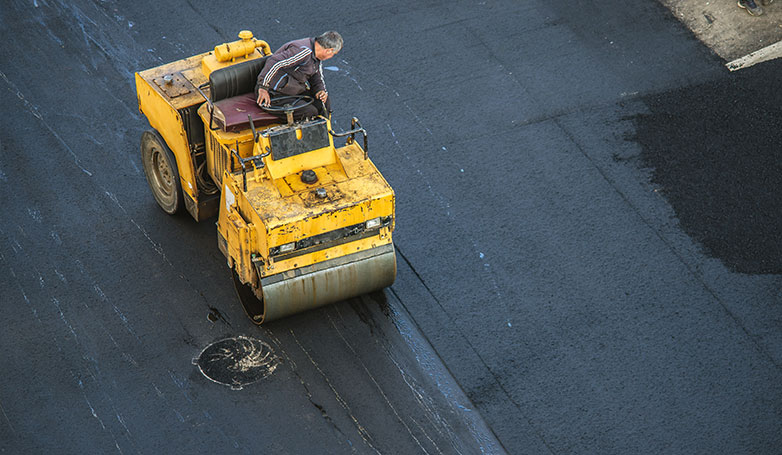
No structure, no matter how solid, can last forever. This rings even truer for those who live in areas where winters are on the extreme side. You surely are aware of what damage a rough winter can cause to your parking lot, be it of asphalt or concrete. In fact, the weather is just one factor, as several others can take a toll on particular surface types.
Every pavement surface must have specific elements that will help it withstand traffic load, weather elements, and others over its lifetime. If you allow inadequacy in the asphalt’s depth or type, or if certain negligence leaves anything lacking in the base support, you can expect premature surface failure.
Then there are also certain other factors relevant to surface types that you need to consider. Bituminous concrete is another composite material that commonly goes into the surface for parking lots. Some common conditions could also cause the surface to deteriorate and the life expectancy to reduce.
The conditions include:
- Shoving actions causes the surface to deform. This happens when traffic pushes the surface, producing an abrupt and short wave-like movement on it.
- Rutting is another harmful factor for the surface. This action includes a lateral or consolidated movement of the surface’s material. This occurs due to a heavy traffic load.
- Raveling may also reduce the estimated parking lot life. This happens when the surface wears away because of tar binder, asphalt or concrete loss, and dislodged aggregate. But only certain conditions create the threat of raveling for your surface. This includes a particular type of traffic, such as aggressively treaded or tracked vehicles. Other conditions that categorize as raveling include oil spillage causing softening and dislodging of the surface.
Weather
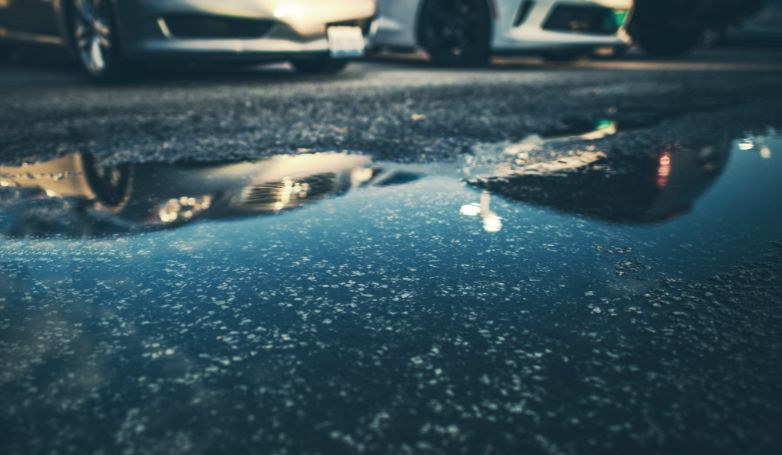
Weather can be brutal to your parking lot, and the after-effects can also significantly reduce the service life of the lot. Let’s look at the weather elements that are detrimental in this regard:
- Ice- one cannot underestimate the severe damages and hazards ice can create on your parking lot. In addition to making the surface extremely slippery, ice causes driving to become hazardous on your lot and also creates deep structural problems. After every ice season, your parking lot may require repaving.
- Rock salt- you may be in the habit of throwing rock salt all over the snow pile in your parking lot. This is perhaps the most damaging thing because rock salt may be melting the ice fast, but it also causes refreezing later. When the melting and refreezing process happens repeatedly, it sneaks into the porous asphalt and starts breaking away at it. Consequentially, you will notice more wear and tear and potholes.
- Weather also causes cracks in your parking lot. The cold and hot weather causes repeated contraction and expansion of the asphalt, and it ultimately develops weak spots and cracks. The ground underneath your asphalt also shifts over time, causing more cracks. This happens because water from the melted ice gets through the cracks and then freezes and expands more. This causes cracks to become bigger year by year.
- Rain, too, causes a lot of wear and tear from puddles and stagnant water. Over time, rain begins to wear down your parking, creating small holes that widen significantly over time. Not only are potholes damaging to vehicles but also dangerous for pedestrians walking over the parking lot.
- Hail may not be too common in your area, but if it is, then your parking lot is in for more trouble. Hail worsens the effect of erosion.
Traffic Type
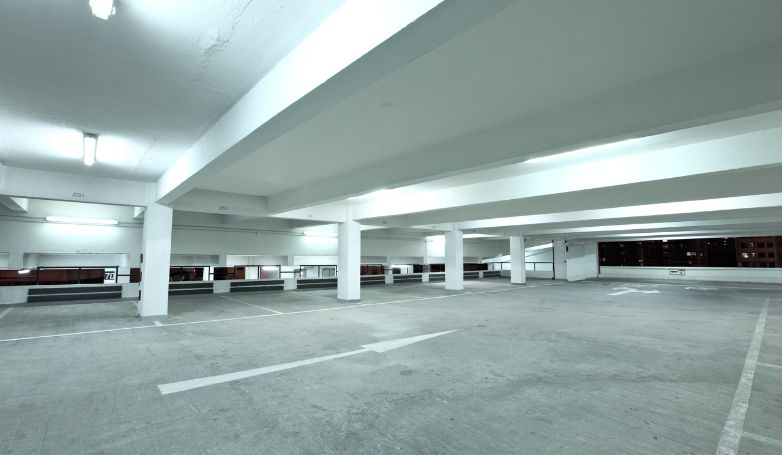
If you subject your parking lot to heavy traffic, it will have adverse effects on the life of your lot’s structure. This is especially true if your parking lot does not feature a design that caters to current loading patterns. The opposite is also a problem here: very little traffic or parking lot usage means the asphalt will become brittle sooner, and shrinkage cracks will form throughout the structure.
Drainage
Two main water problems are detrimental to the estimated parking lot life. These are:
- Sub-surface water saturation
- Insufficient surface drainage
Sub-surface water saturation is the larger of the two menaces because the high water tables or leaking irrigation saturate the support structure under your asphalt. The load-bearing exerts additional stress and eventually cause the asphalt to fail and the base structure to weaken or collapse.
Maintenance
Consistent maintenance can contribute largely to maximizing the life of your parking lot. However, negligence in this regard will cause the cracks to widen, the seepage to worse and other damages to turn worse with abandon.
When you regularly seal and fill the cracks, you slow down the oxidation rate and also protect your structure from water seepage. Proactive repairs go a long way in preventing and minimizing damages to the surface and load-bearing structure of your parking lot.
Durability Comparison between Asphalt and Concrete Parking Lots
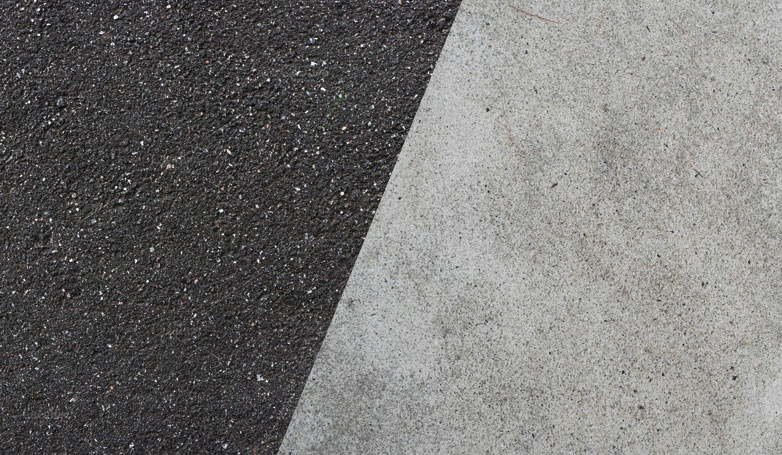
Till a few years ago, rarely would you have come across a parking lot featuring concrete: it was asphalt all the way. With time, you must have seen the widespread popularity of concrete, and they’re all the valid reasons for it.
Concrete sure has several advantages over asphalt apart from durability alone. This includes strength and sustainability, among others, but sadly, concrete still is not the first option for many because of their unawareness.
When it comes to big construction projects like a parking lot, concrete is definitely worth the investment. Let’s take a look at some essential components of asphalt and concrete below to compare the two materials.
Concrete
Many are of the belief that asphalt parking lots last for approximately twenty to twenty-five years. In truth, asphalt lots require major repairs in as less as five or seven years after you install them. But when we talk about concrete, you can trust this material to last you far longer.
You find it interesting to note that experts expected the original concrete roads to last for twenty years. The same roads not only completed their twenty-years life expectancy but are going strong even thirty, forty, and fifty years later.
Concrete even has the potential to spread heavy loads over its larger areas. Hence it is more durable in the long term. It minimizes pressure on its sub-base too. Due to this characteristic and considering the soil type and application, concrete lots can even use lesser aggregate in your base than asphalt.
This proves the optimal longevity and durability of concrete. In comparison, you will hardly find any asphalt parking lot or even roads that outlast their initial or speculated lifespan. But with concrete, you can expect this as a standard because concrete is meant to last.
When you put the travel, vehicle load, and weather into consideration, you’d find it sensible to choose concrete that can withstand massive daily stress.
Asphalt
Asphalt does not last as long as its own life expectancy, let alone outlast it like concrete. Those who own asphalt parking lots will tell you how they had to conduct repairs in less than five years after the installation and have had to do so repeatedly.
Asphalt also lacks the ability to spread loads and, as a result, creates high points that exert higher pressure on the subbase. As a result, the likely degradation escalates, and the subbase begins to deteriorate.
You find yourself conducting maintenance and repairs on the asphalt parking lot sooner than you had expected.
Proper Asphalt and Parking Lot Maintenance
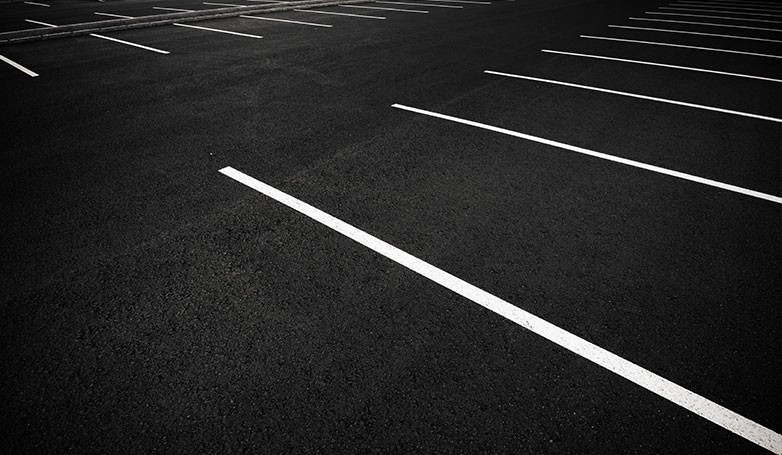
Proper maintenance is key to having your parking lot remain in top shape for as long as possible. If you have an asphalt parking lot, you can follow certain best measures for its maintenance. Let’s take a look at those below:
- Repair pothole as soon as they appear
- Ensure proper signage
- Seal and fill the cracks as soon as they appear and before they have a chance to widen
- After every two years, you must treat your parking lot to seal coating
- Conduct inlet repairs the moment you notice signs of failure
- Never take standing water in your parking lot lightly. Find out its root cause immediately and remediate it. Many parking lots have suffered failures from standing water and the eventual free-thaw cycles. If you leave small cracks untreated, they will soon turn into potholes, and the pavement will likely fail.
We can define the proper asphalt maintenance practices into three categories, based on the order of priority.
What you must do
You must immediately attend to parking lot troubles that revolve around personal and property liabilities. This includes hazards like potholes, broken curbs, large cracks, raised sidewalks, failing inlets, and alligatored areas.
What You Should Do
You should pay due attention to parking lot areas that concern with preventive maintenance measures. These will also help you stay ahead in cost savings by preventing a lot of complicated problems that could occur due to neglect in maintenance.
What You Could Do
You could reconstruct the parking lot when your budget permits and when you feel your parking lot has served you sufficiently without asking for attention. This way, you can avoid a lot of costly base repair if you perform paving and milling early.
Proper Concrete Parking Lot Maintenance
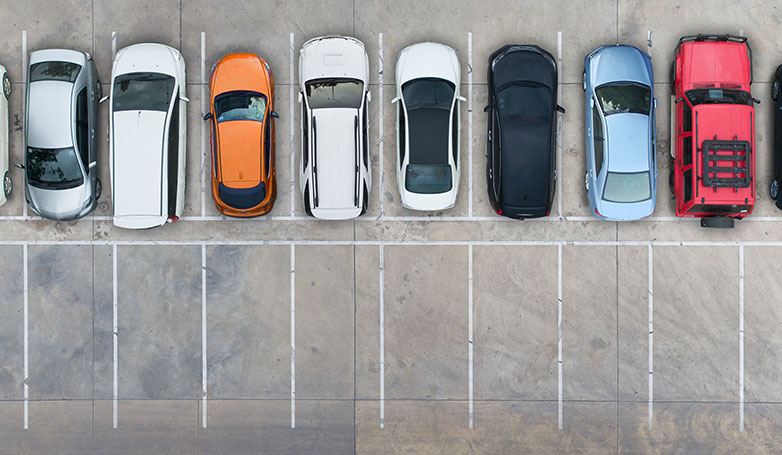
For concrete parking lots, you can conduct maintenance every three to five years. To this end, you will have to address small issues really and not heavy structural issues. A proper concrete maintenance checklist must include the following:
- Surface sealing- you must use a sealant to block the porous surface against salt and water’s corrosive effect. Sealing the surface is a fine idea because it prevents more damage from occurring and will also reduce the need for further concrete repairs in the future.
- Filling chips and cracks- for repairing cracks, you have to fill with concrete, pourable crack filler of a leveling caulk. You can use hydraulic cement if you have to patch up chips.
- Deep surface cleaning– for this, you can power wash your concrete lot annually. It will clear all the dirt piles and uncover the beautiful and fresh concrete underneath.
- Stabilizing sinking or low areas- for this, you will have to pump cement slurry below your problem area. You may even use a cold mix pothole filler for patching the pothole.
- Uneven section grinding- concrete sections tend to shift, causing uneven surfaces. You can fix this problem by grinding down the high sides and attaining a smooth surface.
- Protective coating application- for this, you can add a protective layer of the acrylic coating to your concrete lot. It will serve as a barrier until the parking lot needs a replacement, which is typically after years or more.
Conclusion
The estimated parking lot life is typically around twenty to twenty-five years, unless it is concrete that can last even beyond. The key to maximizing the life of your parking lot is making time and set aside a budget for its preservation. Proper maintenance, regular checks on your parking lot, and proper measures will suffice in achieving the service life period you expect from your parking lot.


